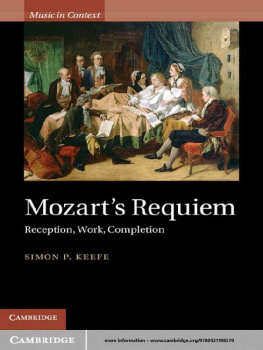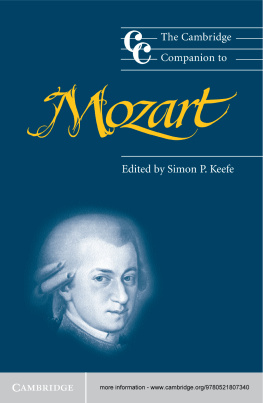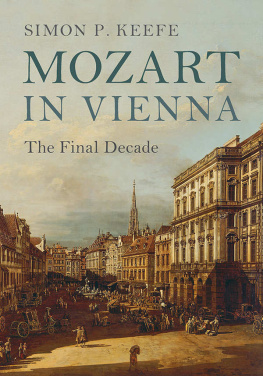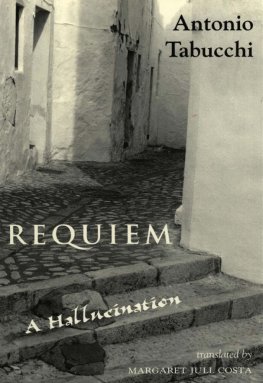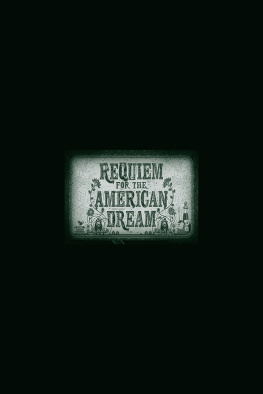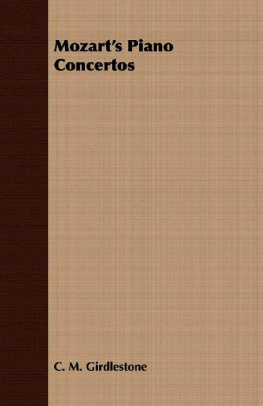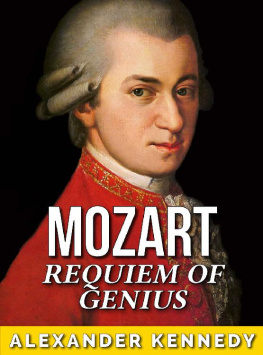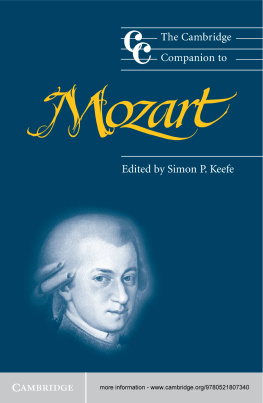Mozarts Requiem
Presenting a fresh interpretation of Mozarts Requiem, Simon P. Keefe redresses a long-standing scholarly imbalance whereby narrow consideration of the text of this famously incomplete work has taken precedence over consideration of context in the widest sense. Keefe details the reception of the Requiem legend in general writings, fiction, theatre and film, as well as discussing criticism, scholarship and performance. Evaluation of Mozarts work on the Requiem turns attention to the autograph score, the document in which myths and musical realities collide. Franz Xaver Sssmayrs completion (17912) is also re-appraised and the ideological underpinnings of modern completions assessed. Overall, the book affirms that Mozarts Requiem, fascinating for interacting musical, biographical, circumstantial and psychological reasons, cannot be fully appreciated by studying only Mozarts activities. Broad-ranging hermeneutic approaches to the work, moreover, supersede traditionally limited discursive confines.
SIMON P. KEEFE is James Rossiter Hoyle Chair and Head of Music at the University of Sheffield. He is the author of Mozarts Piano Concertos: Dramatic Dialogue in the Age of Enlightenment and Mozarts Viennese Instrumental Music: A Study of Stylistic Re-Invention , and has edited five volumes for Cambridge University Press: The Cambridge History of Eighteenth-Century Music , Mozart Studies , The Cambridge Mozart Encyclopedia (with Cliff Eisen), The Cambridge Companion to Mozart and The Cambridge Companion to the Concerto . He is also the author of more than forty scholarly articles and book chapters.
Music in Context
Series editors
J. P. E. Harper-Scott
Royal Holloway, University of London
Julian Rushton
University of Leeds
The aim of Music in Context is to illuminate specific musical works, repertoires or practices in historical, critical, socio-economic or other contexts; or to illuminate particular cultural and critical contexts in which music operates through the study of specific musical works, repertoires or practices. A specific musical focus is essential, while avoiding the decontextualization of traditional aesthetics and music analysis. The series title invites engagement with both its main terms; the aim is to challenge notions of what contexts are appropriate or necessary in studies of music, and to extend the conceptual framework of musicology into other disciplines or into new theoretical directions.
Mozarts Requiem:
Reception, Work, Completion
CAMBRIDGE UNIVERSITY PRESS
Cambridge, New York, Melbourne, Madrid, Cape Town, Singapore, So Paulo, Delhi, Mexico City
Cambridge University Press
The Edinburgh Building, Cambridge CB2 8RU, UK
Published in the United States of America by Cambridge University Press, New York
www.cambridge.org
Information on this title: www.cambridge.org/9780521198370
Simon Keefe 2012
This publication is in copyright. Subject to statutory exception and to the provisions of relevant collective licensing agreements, no reproduction of any part may take place without the written permission of Cambridge University Press.
First published 2012
Printed in the United Kingdom at the University Press, Cambridge
A catalogue record for this publication is available from the British Library
Library of Congress Cataloguing in Publication data
Keefe, Simon P., 1968
Mozart's Requiem : reception, work, completion / Simon Keefe.
p. cm.
Includes bibliographical references and index.
ISBN 978-0-521-19837-0
1. Mozart, Wolfgang Amadeus, 17561791. Requiem, K. 626, D minor. I. Title.
ML410.M9K27 2012
782.3238dc23
2011053269
ISBN 978-0-521-19837-0 Hardback
Cambridge University Press has no responsibility for the persistence or accuracy of URLs for external or third-party internet websites referred to in this publication, and does not guarantee that any content on such websites is, or will remain, accurate or appropriate.
For my parents, Terry and Sheila Keefe,
and in memory of
Edith Prinz (19392011) and Rudi Prinz (19382009)
Contents
Music examples
Tables
Acknowledgements
I am grateful to a number of scholars for their support, assistance and encouragement. Colleagues at City University London (20038), at the University of Sheffield (2008) and at the Akademie fr Mozart-Forschung at the Internationale Stiftung Mozarteum in Salzburg listened repeatedly to my ideas about Mozarts Requiem and offered sound advice. David Black, Neal Zaslaw and Rachel Cowgill kindly sent me unpublished materials and Anja Morgenstern alerted me to the existence of one of the more obscure nineteenth-century fictional accounts of Mozarts death discussed in with permission from the University of California Press.
My warmest thanks are extended to my family. My sister and brother-in-law Rosanna Keefe and Dominic Gregory are always on hand to chat, and to help keep the rigours of academic work in perspective. My wife Celia Hurwitz-Keefe and children Abraham and Madeleine have offered far more love and encouragement than I have had a right to expect; each has shared my passion for Mozarts Requiem and the issues it contains in different, but equally and unequivocally generous ways.
I dedicate this book to my parents, Terry and Sheila Keefe, as an all-too-small token of my gratitude for their unwavering love and support and in celebration of their fiftieth wedding anniversary in 2012, and to the memory of our life-long Austrian friends, Edith and Rudi Prinz. That my fondness for Mozart and Austria is mutually reinforcing owes much to Edith and Rudis extraordinary generosity and hospitality during innumerable visits over three decades. They, and their small and unassuming hometown, Stadt Haag in Niedersterreich, will always have a special place in my affections.
Introduction Mozarts Requiem in context
In 1791, the last year of his life, Mozarts compositional reputation was flourishing. His published works were widely disseminated in Vienna and beyond, his operas Die Entfhrung aus dem Serail , Le nozze di Figaro , Don Giovanni and Cos fan tutte were staged around Europe, and his commissions were healthy in number and diverse in orientation, including the singspiel Die Zauberflte for the Theater auf der Wieden in Vienna, the opera seria La clemenza di Tito for Emperor Leopold IIs coronation in Prague, the Clarinet Concerto in A, K. 622, for the virtuoso Anton Stadler, the motet Ave verum corpus, K. 618, for Baden, and the cantata Laut verknde unsre Freude , K. 623, for the Viennese Masonic lodge Zur neugekrnten Hoffnung.
The basic facts about the commissioning, composition and completion of his final work, the Requiem in D minor, K. 626, have long been known and, on the surface at least, are a far cry from imaginative interpretations and re-interpretations of them.
Mozarts Requiem is a liturgical work, strongly tied to traditions of sacred music; there is no evidence that its composer envisaged a concert performance. In addition to the sections set to music by Mozart and his completers, the liturgical service prescribes intoned texts between the Kyrie and Sequence (Oratio: Fidelium Deus omnium, and Lectio), the Sequence and the Offertory (Evangelium), the Offertory and the Sanctus (Praefatio defunctorum) and the Benedictus and Agnus Dei (Pater noster). He probably got to know Handels works, the parallels with which are too close to allow for coincidental resemblance, through the civil servant and court administrator Baron Gottfried van Swieten, for whom he had previously re-orchestrated four of Handels works, Acis and Galatea , K. 566 (1788), Messiah , K. 572 (1789), Alexanders Feast , K. 591 (1790), and the Ode for St Cecilias Day, K. 592 (1790).

